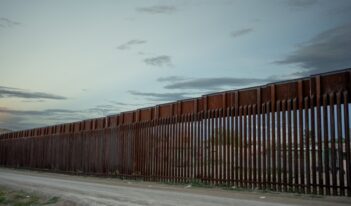
Smaller local jurisdictions are adopting pro-immigration policies at an unprecedented rate.
Although sanctuary cities such as Seattle and Chicago have been in the news for opposing President Donald J. Trump’s restrictive immigration policies, pro-immigration policies are taking root in other unlikely places.
A recent article by Huyen Pham of the Texas A&M University School of Law and Van H. Pham of Baylor University shows that smaller cities and suburbs increasingly provide sanctuary for immigrants, even though voters in some of these localities backed President Trump in the 2016 election. In addition, school districts and transit agencies around the country have adopted pro-sanctuary policies.
Pham and Pham observe that sub-federal jurisdictions have reacted in unprecedented numbers to anti-immigration policies. Cities and counties in 2017 have enacted more pro- and anti-immigration regulations than in the previous 12 years combined. With such regulations, cities make their opposition to federal policies clear. For example, the city of Gary, Indiana passed an ordinance to “assure that each person is treated equally regardless of their immigration status.”
An “immigration climate index” developed by Pham and Pham measures whether a regulation has a pro- or anti-immigration effect, as well as the number of people the regulation directly impacts.
Their index shows three distinct phases in immigration policies from 2005 to 2017. Between 2005 and 2012, sub-federal policies were mostly anti-immigration, which Pham and Pham attribute to the effects of the September 11, 2001 terrorist attacks. From 2012 to 2016, public attitudes reversed and pro-immigration policies came to hold a narrow majority of new policies across the country.
The election of President Trump signaled a dramatic shift toward immigration-restrictive policies at the federal level. Some states followed his lead. For example, in 2017 Texas Governor Greg Abbott signed a ban on sanctuary cities. Most sub-federal jurisdictions, however, went in the opposite direction. After 2016, the number of pro-immigration policies spiked upwards as a result of what Pham and Pham call the “Trump Effect.” They calculate a roughly 9-to-1 ratio of pro-immigration to anti-immigration policies at the sub-federal level since 2016.
A large part of the post-election uptick in regulation supporting immigrants has come from smaller cities in the range of 50,000 to 100,000 inhabitants—including 23 jurisdictions that voted for President Trump. Pham and Pham attribute the rapid adoption of these policies to the smaller size of local governments and their ability to make sweeping changes without creating much fanfare or resistance.
Of course, even the most pro-immigrant cities cannot fully prevent the U.S. Immigration and Customs Enforcement (ICE) from carrying out its enforcement duties. The most that these cities can do is limit local police cooperation with ICE, or refuse to share data with them. Even though the Trump Administration has targeted some larger sanctuary cities, perhaps in retaliation for their resistance, pro-immigration regulation has become more common.
In recognition of immigrants’ vulnerability even in towns and cities with sanctuary policies, entities other than state and local governments have pushed to enact similar policies.
New actors such as school districts and universities have begun to pass their own sanctuary policies to show support for immigration. Public school districts are the most active of these new actors, with more than 30 districts passing sanctuary policies in 2017 alone. These school districts justify these policies based on the Supreme Court’s decision in Plyler v. Doe, which held that undocumented children possess a constitutional right to K-12 education.
Pham and Pham note that the Trump Administration’s immigration policies could have a deep impact on schools. ICE has begun to make arrests at locations previously thought to be off-limits to immigration enforcement, such as schools and courthouses. As a result, children and their families may fear that they will be arrested at or on the way to school, and may stop attending. Since schools only have a limited amount of authority over children and their family members outside of school, Pham and Pham regard school policies as mainly symbolic.
Universities have been slower to adopt sanctuary policies, as they are not covered by Plyler. But there are prominent exceptions, such as the University of Pennsylvania and the California State University system.
Pham and Pham also observe that the Bay Area Rapid Transit (BART), which operates a mass-transit system in San Francisco, adopted a “Safe Transit Policy” which asserted “the rights of individuals to be treated fairly” and to live “free from discrimination” because of their “immigration status.”
Pham and Pham describe the adoption of pro-immigration policies by sub-federal bodies as “one of the most significant aspects of the Trump Effect” on immigration regulation. They expect that still more jurisdictions will enter the immigration arena in the coming years.



